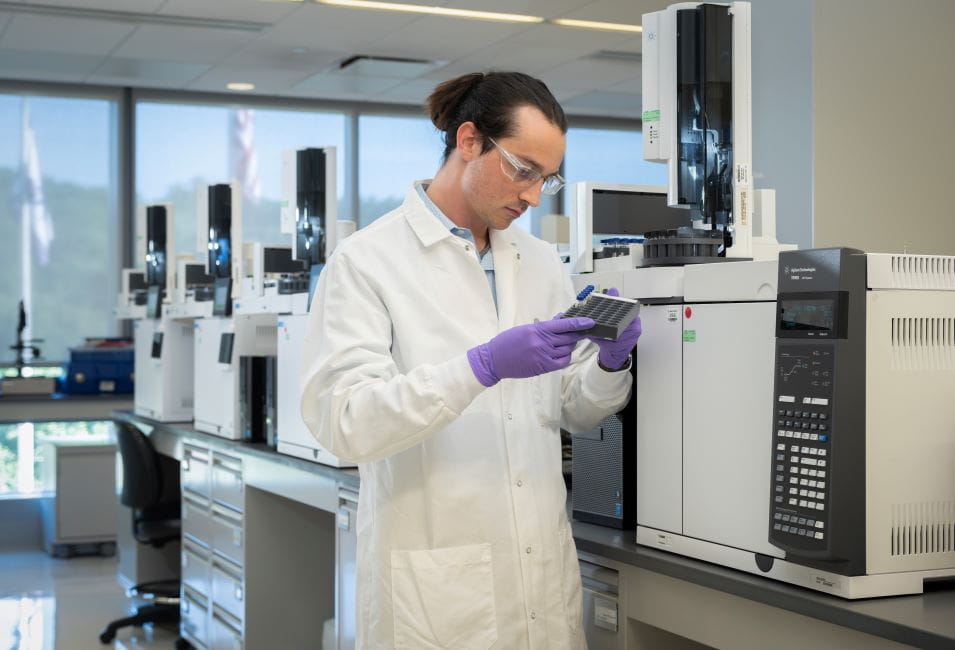Leachables Method Development and Validation and the Updated Relevant ICH References – Part 2 – Method Development
This is part two of a three-part series about how recent updates to ICH Q2(R2) and Q14 can be applied to the development and validation of leachables methods. You can find part one here.

Along with the release of ICH Q2(R2) in June 2024 came the release of the new ICH Q14 guideline on analytical procedure development. As with guidelines like these a fully prescriptive process is not described. Instead, this guideline offers an approach to method development that is based on product/process knowledge, established scientific principles, and quality risk management. It also includes, along with information about more traditional methodologies, information on how to handle multivariate analytical procedures where results are based on models built using sound data science principles. ICH Q14 can be used by readers as a guide for analytical procedure development, managing the lifecycle of a procedure including changes, and common technical document (CTD) submission, along with useful examples in its annexes. This blog post will focus only on the topic of method development within the scope of testing drug products for the presence of packaging leachables and will be done by using a contrived but simple example to highlight the key points of the new guideline.
The example product is a biologic in a prefilled syringe composed of a glass barrel, chlorobutyl rubber plunger, staked steel needle, and chlorobutyl rubber needle shield. Among many of the critical quality attributes of such a product is the need for packaging leachables to be at or below a concentration of toxicological concern or other threshold of concern. This is the first item in the list of attributes that need to be determined at a minimum for a new leachables method. The others are selecting an appropriate analytical technology, conducting studies to evaluate method performance, and documentation of the procedure and its control strategy. The guideline also offers an enhanced approach that includes conducting a risk assessment to identify the method parameters that can impact its performance, conducting experiments to explore ranges and interactions between parameters (sometimes referred to as a “design of experiments” or “DoE”), and identification of a control strategy which is just a way to say what the relevant set points are for the method and what the appropriate system suitability tests and criteria are. With all of this in mind, is the minimum (or what may be considered “traditional”) approach enough? Or is the enhanced approach needed? For leachables the answer is somewhere in between, and case based. In this example, the minimum approach is needed, and a control strategy would need to be defined.
Leachables in this example drug product need to be determined at each time point of the leachables study. An appropriate analytical technology needs to be selected that helps achieve this. After narrowing in on typical known extractables from chlorobutyl rubber, the leachables of concern may be the butyl oligomers, the chlorobutyl oligomers, and the antioxidant(s). Often these compounds can be identified and quantified via gas chromatography with a variety of detectors, so the use of a GC for this example seems to be appropriate. However, there may be a need for better sensitivity for some target compounds, which can be achieved with a GC/MS, too. This is the point where traditional method development is performed, but before heading into the lab to run experiments, it is recommended that a risk assessment, even a simple one, be performed to estimate the parameters that will most affect the outcome of the method. This could include the preparation of the sample, the set up and tuning of the detector, and chromatography parameters. The output of this typically would be a list of parameters that would need to be examined during development along with performance characteristics of the method (e.g., specificity, accuracy, range, and robustness). Examples of these parameters include the type of column to be used, the GC oven program and other temperatures, and detector mode and mass ranges.
A control strategy for the method will include the list of parameters determined during development through experimentation or prior knowledge, their ideal set points, and what the system suitability test should be. The system suitability tests in this example would need to show that the critical instrument parameters selected lead to acceptable results. In the case of a GC/MS test, this may include calibration model adherence (e.g., coefficient of determination or R2), precision at the analytical evaluation threshold (AET) concentration, and demonstration of instrument detectability at the needed quantitation limit. Since the approach used mostly follows the minimal criteria described in the guideline, and only the relevant method parameters are defined, all the parameter set points and the system suitability tests then become what the guideline calls “established conditions” which may come under scrutiny during a risk assessment of any product and/or method changes.
The final output of the development of the method is the definition of method validation criteria to test the performance characteristics that were identified during development. That output may look like Table 1 which will be carried into the next part covering method validation.
Table 1. Leachables method example characteristics and proposed criteriaα
| Performance Characteristic | Validation Criteria (for each target leachable) |
|---|
| Specificity | No interference at ret. time of target |
| Range | 0.5 – 5 ng/mL, R2 ≥ 0.98 |
| Quantitation limit | Pass accuracy tests at QL |
| Accuracy (at least 3 conc. in range) | 80 – 120% of theoretical, (70 – 130% for QL only) |
| Precision (at AET conc.) | RSD ≤ 0.15 |
αThese may or may not be typical and are proposed here only as an example.
For more information on our Extractable and Leachable expertise and testing capabilities click here.



